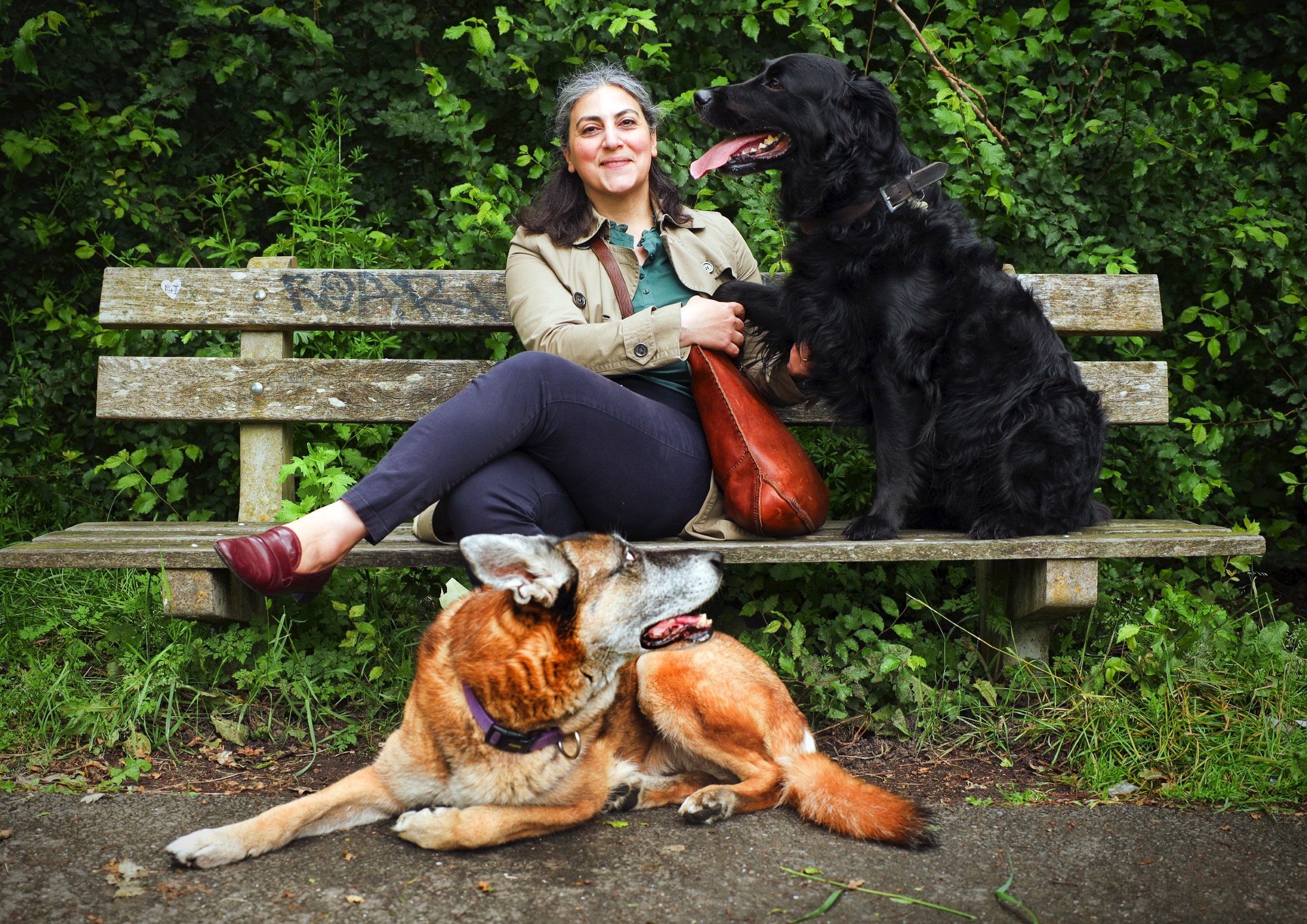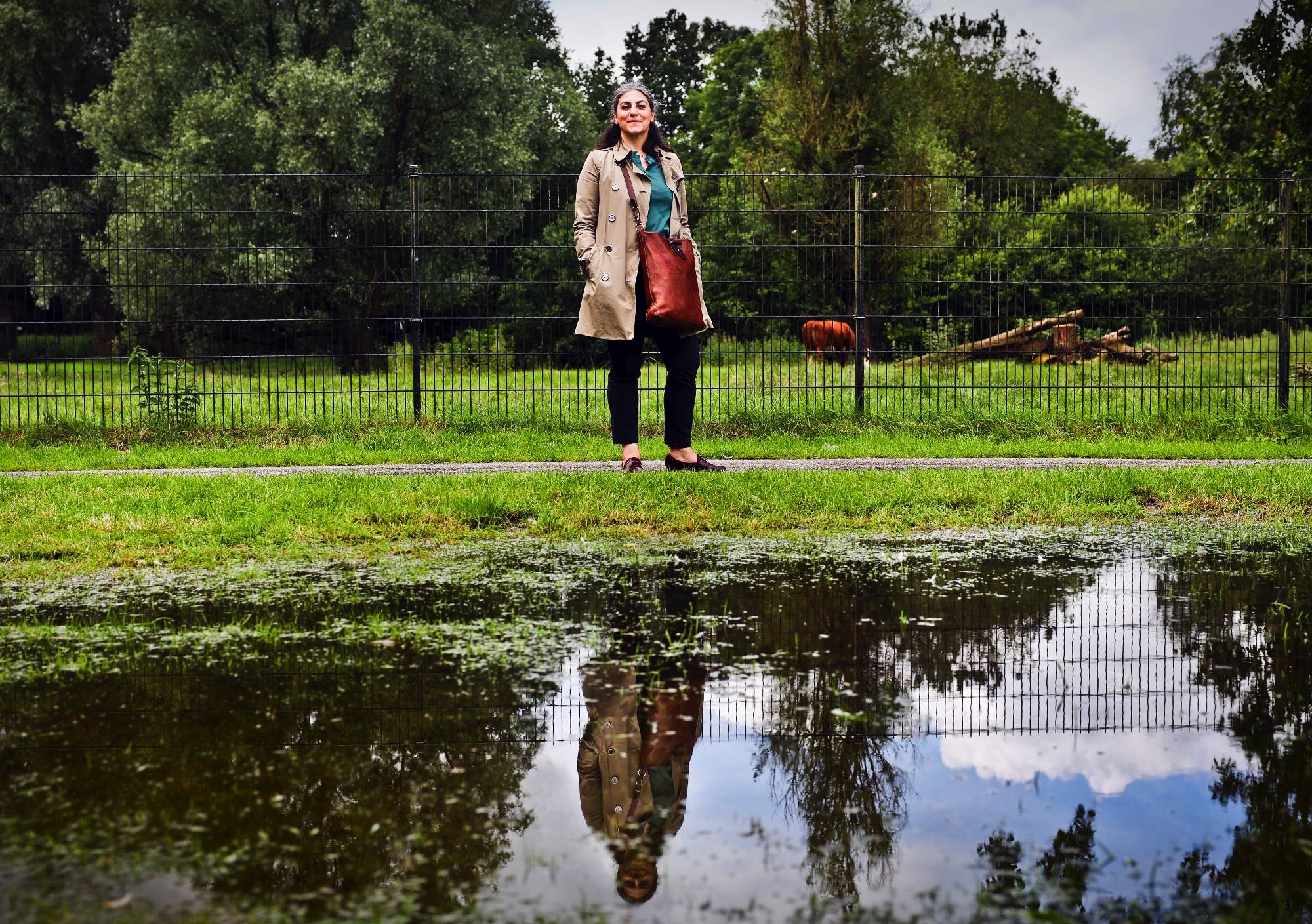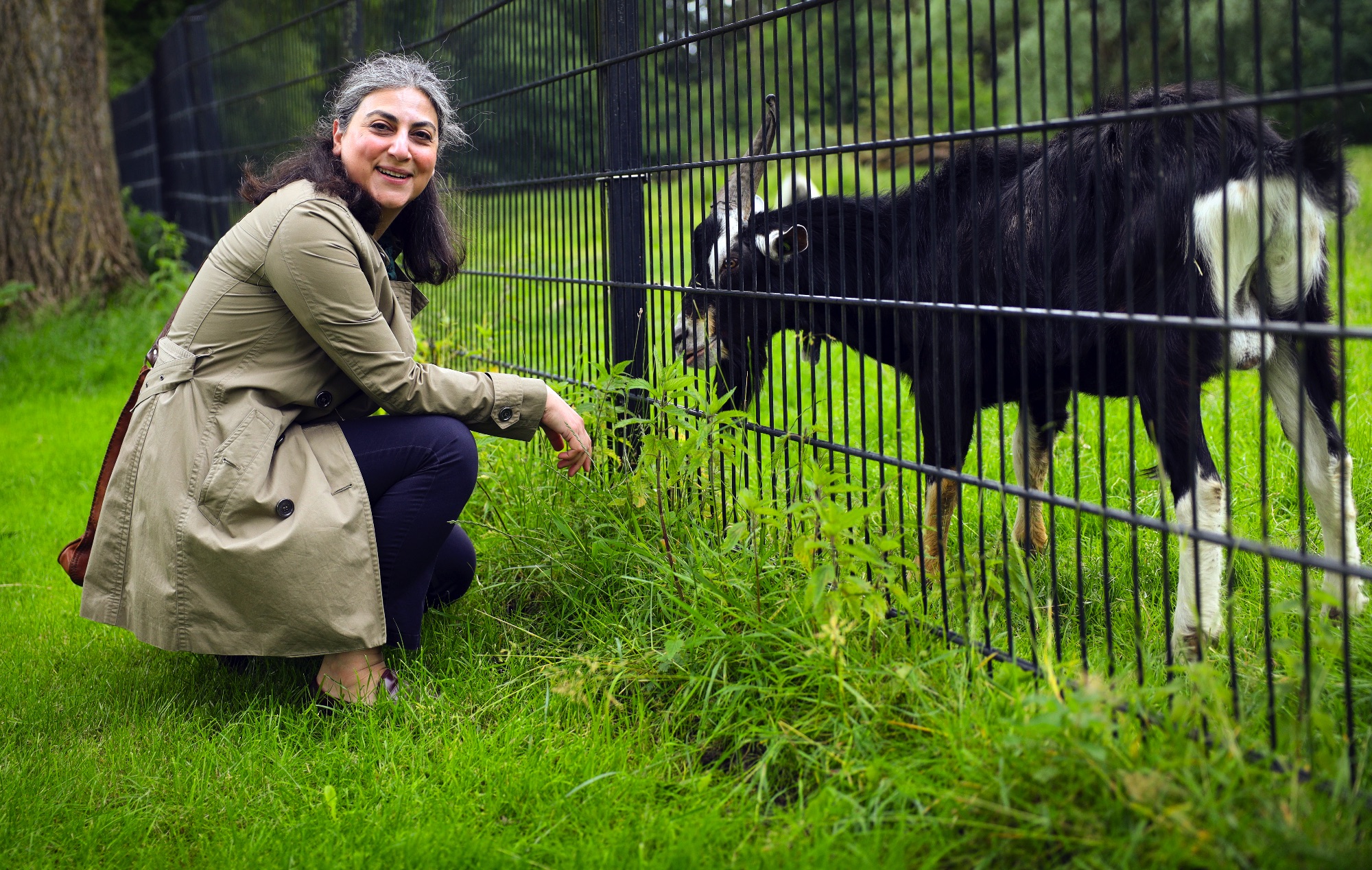‘We are much more connected to our distant ancestors than we think’
Sixteen thousand years ago, people already made art for their enjoyment, had advanced technologies, cared for one another, and adored their dogs, who they kept as their companions. ‘They were civilized human beings like you and me,’ says Inanna Hamati-Ataya, Professor of Global International Relations at the Faculty of Arts. ‘Our distant ancestors also had to deal with climate change, migration, technological innovations, and changing societies and cultures. A deeper understanding of how they dealt with this helps us understand the present and gain a better understanding of our future.’
Text: Theone Joostensz | Photos: Henk Veenstra

How is it possible that innovations like fermenting food arose independently all over the world? Why is it that the potato is one of our most important foods even if it is not native to Europe? In order to unravel these kind of mysteries we must delve deeply into history, and that is exactly what Inanna Hamati-Ataya does. She studies how knowledge and technological innovations in the field of agriculture and food production have spread across the globe since early history, and how these transformations sometimes play a decisive role for the values and power relations within global politics. She is writing an academic book about this in four parts and also plans to incorporate her research in a popular academic book.
Agricultural revolutions
Hamati-Ataya initially began her research by focusing on the earliest agricultural revolution, some ten thousand years ago, when we switched from life as nomadic hunter-gatherers to a settled existence as farmers. ‘The first agricultural revolution was an important transformation that had a major impact on how we treated the earth and one another,’ she says. ‘The same goes for the two subsequent agricultural revolutions: the mechanization in agriculture and the ‘green’ agricultural revolution that spurred intensive agriculture, of which we reap the bitter fruits until this very day.’
However, she gradually became aware that the global transfer of knowledge and technology took place much earlier: a hundred thousand years ago, people were already roaming the earth, spreading their knowledge and culture. Hamati-Ataya realized that this mainly concerns long-term and large processes that can only be understood from a broader perspective. ‘I began to immerse myself in prehistory, the period in history before there was agriculture. Which knowledge and technology did people use then? How did they treat their environment and how were their societies organized? Our general idea is that the prehistoric era was a dark, misty time without civilization. But the people who lived then already made art and used advanced technologies. They were able to adjust themselves to changing conditions, they cared for one another, and they considered their dogs to be their companions. That is civilization! It is amazing to discover that what we find unique about ourselves, is not as unique as we think. We are much more connected to our far ancestors than we think. That creates the powerful realization that you can also feel connected to people who live today. That is wonderful.’
Through this insight, Hamati-Ataya began to look differently at the recent history, the present, and the future. ‘By studying our distant history, we can forge much stronger ties. For example, migration is of all times. People migrate because they have to survive or because they want a better life: it has always been like that, except that we did not know passports and borders for the majority of our history. Migrants brought their knowledge, culture, and foods with them to their new communities and simultaneously adjusted themselves to the environment. Societies are always constantly evolving, and that is a wonderful thing.’

Travelling potatoes
In her research, Hamati-Ataya looks at transformations at the macro level. She is interested in how new technologies, crops, and animals have spread themselves over the course of thousands of years. ‘There are different agricultures across the world simply because landscapes and ecosystems vary. This leads to the emergence of different cultures that produce different types of food. But the underlying pattern is often the same: people adjust themselves to changes in their environment or might use it to their advantage. There is always a certain logic behind an innovation. Despite the differences, you see that techniques, crops, and animals circulate. Potatoes and tomatoes travelled from South-America to Europe and we can now no longer imagine our diet without them. African rice ended up in South-America and wheat went from the Middle East to Mexico. If you consider the world in this way, national borders are not interesting. How humans, crops, and animals travel from one climate to another and survive there, that is interesting. And also: what are the ecological borders that prevent something from surviving?’
In the absence of written sources from which historians usually obtain their information, she reconstructs this story using existing research by archaeologists, climatologists, palaeontologists, anthropologists, and biologists. ‘For example, studies show that this is not the first time we are facing climate change. We can look back and try to understand how we have adjusted ourselves, which dangers we faced, and what we can learn from it now.’

Cultured meat and vertical agriculture
Today, we find ourselves on the eve of the so-called fourth agricultural revolution, characterized by a series of innovations to produce food in a sustainable way. One of these innovations is cellular agriculture, in which animal products like cultured meat and leather are made from cells without having to slaughter animals. ‘In the third part of my book, I discuss how technologies like cellular agriculture and vertical agriculture change our interaction with our environment,’ says Hamati-Ataya. ‘It really is a fascinating scenario.’
About Inanna Hamati-AtayaBefore she came to Groningen, Inanna Hamati-Ataya worked for the Centre for Research in the Arts, Social Sciences and Humanities (CRASSH) at the University of Cambridge. While based there, she founded the Centre for Global Knowledge Studies which now partially operates from the University of Groningen. Together with her husband Hemelkart Ataya, Inanna is the co-founder of a social business— a CRASSH spin-off— that focuses on safeguarding and transferring age-old agricultural knowledge that might disappear as a result of climate change. ‘In Europe, there are thousands of farms, often family businesses, that will get in trouble due to climate change. The products they make are tied to the location and are made through age-old procedures. Consider, for example, cheese, wine, marmalade, and cold cuts from a specific region. If that region cannot produce any longer, all knowledge will be lost. Our aim is to help these farmers be compensated for this and that, simultaneously, the age-old knowledge will be safeguarded so it can possibly be adopted by other regions that continue to cherish and develop it as a collective cultural heritage.’ |
More news
-
16 December 2025
How AI can help people with language impairments find their speech
-
18 November 2025
What about the wife beater? How language reinforces harmful ideas
-
03 November 2025
Menopause in perspective: How the media influences our perception
